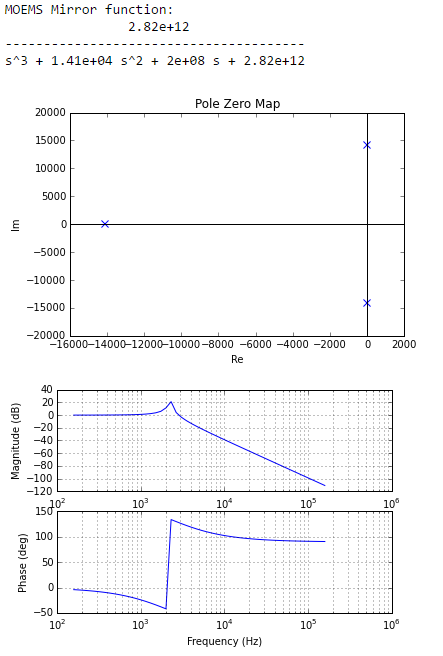I'm trying to model the transfer function of a linear system (a MOEMS mirror) based on a datasheet plot of its response. I'm developing the model in the python-control model and I think that I've got the model pretty close, except that the Bode plot appears to wrap the phase response to keep it within $\pm 180^\circ$. My question is threefold:
Is there a material difference between my model and what's in the datasheet with respect to the frequency wrapping?
Is there a simple way in the python-control library to unwrap the plot
Are there any other suggestions to improve my model?
Here is the response plots from the datasheet:
Here is my model:


